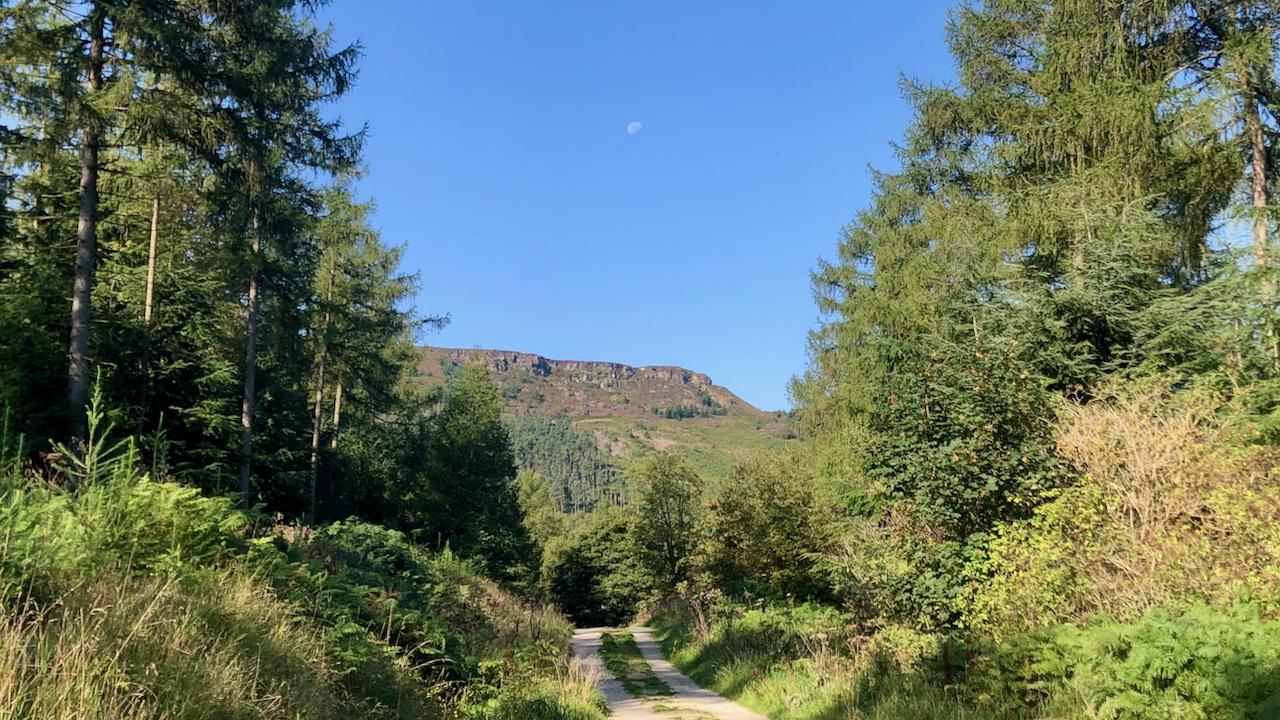A brisk autumn morning but with a subtle nip in the roriferous air, though the temperature would soon be rising. A warm day beckoned.
Meanwhile, 377,000 kilometres away, the moon hangs in the morning sky, as is often the case during its waning gibbous phase, when it transitions from full to half. Down below on earth, White Hill towers above, bearing the scars of that fateful landslip in 1872. It wreaked havoc, covering the main Stokesley to Helmsley road with rocks, shale, and soil to a depth of up to 24 feet deep and covering a length of 250 yards. It all led to quite a legal showdown, presented before the Queen’s Bench of the High Court of Justice. I’ve delved into this legal wrangle previously, as some of you might recall, here and here.
Back in those days, roads were maintained by the parish or township and, in this case, it was down to the folks of Greenhow, a handful of small farmers. They faced a daunting choice: wrestle with the mess, provide proper drainage, and stabilise the slope, or reroute the traffic through an alternate path via Ingleby Greenhow village and up Clay Bank, a journey 1½ miles longer with a fair share of gates and steeper gradients. The price tag for repairing the existing road was a staggering £100,000, a sum equivalent to around £11 million in today’s money. Naturally, the Greenhow residents leaned toward the diversion; they hardly used the old route, after all.
Now, the Bilsdale folks, they weren’t too pleased. They preferred the old road, which was handier for their trips to the market town of Stokesley. Legal action became their chosen course of action.
And so, four long years later, in 1876, the case of Regina v Inhabitants of Greenhow finally had its day in court. The verdict favoured Bilsdale, with Greenhow being saddled with the bill through a special parish rate. A generous donation from the lord of the manor, Lord De L’Isle and Dudley, did take a bit of the sting out of it. Plus, the Bilsdale residents chipped in with their labour and transport to help patch up the road.
Fast forward to the 1930s, and the County Council built a new lower road, the one we still drive on today. Yet, the ghostly trace of the old road remains, now a Public Footpath. Pine trees were planted to help stabilise the precarious slope, but in recent years, those very pines have been felled by the forestry workers. I hope they’ve read their history1Marsay, Brian. “T’ills was Fallin’ Down—The Great Landslip of 1872.” Bilsdale Study Group. 2005..
- 1Marsay, Brian. “T’ills was Fallin’ Down—The Great Landslip of 1872.” Bilsdale Study Group. 2005.

Leave a Reply